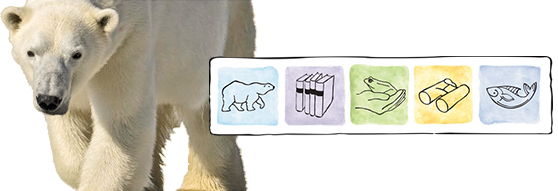Metabolism and thermoregulation during fasting in king penguins, Aptenodytes patagonicus, in air and water
Publication Type: |
Journal Article |
Year of Publication: |
2005 |
Authors: |
A. Fahlman, A. Schmidt, Y. Handrich, A.J. Woakes, P.J. Butler |
Publication/Journal: |
American Journal of Physiology Regulatory, Integrative and Comaparative Physiology |
Keywords: |
allometry, aptenodytes patagonicus, hypometabolism, king penguin, metabolism, penguin, sea bird, thermoregulation, thermoregulatory plasticity |
Abstract:
We measured oxygen consumption rate (O2) and body temperatures in 10 king penguins in air and water. O2 was measured during rest and at submaximal and maximal exercise before (fed) and after (fasted) an average fasting duration of 14.4 ± 2.3 days (mean ± 1 SD, range 10–19 days) in air and water. Concurrently, we measured subcutaneous temperature and temperature of the upper (heart and liver), middle (stomach) and lower (intestine) abdomen. The mean body mass (Mb) was 13.8 ± 1.2 kg in fed and 11.0 ± 0.6 kg in fasted birds. After fasting, resting O2 was 93% higher in water than in air (air: 86.9 ± 8.8 ml/min; water: 167.3 ± 36.7 ml/min, P < 0.01), while there was no difference in resting O2 between air and water in fed animals (air: 117.1 ± 20.0 ml O2/min; water: 114.8 ± 32.7 ml O2/min, P > 0.6). In air, O2 decreased with Mb, while it increased with Mb in water. Body temperature did not change with fasting in air, whereas in water, there were complex changes in the peripheral body temperatures. These latter changes may, therefore, be indicative of a loss in body insulation and of variations in peripheral perfusion. Four animals were given a single meal after fasting and the temperature changes were partly reversed 24 h after refeeding in all body regions except the subcutaneous, indicating a rapid reversal to a prefasting state where body heat loss is minimal. The data emphasize the importance in considering nutritional status when studying king penguins and that the fasting-related physiological changes diverge in air and water.


